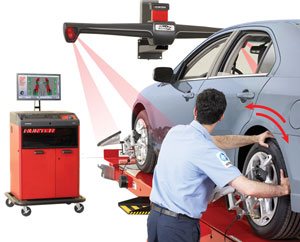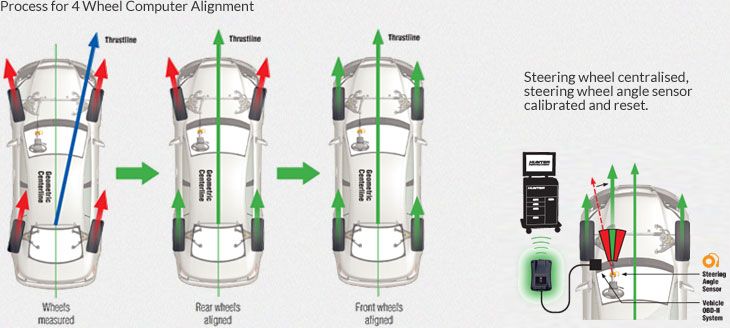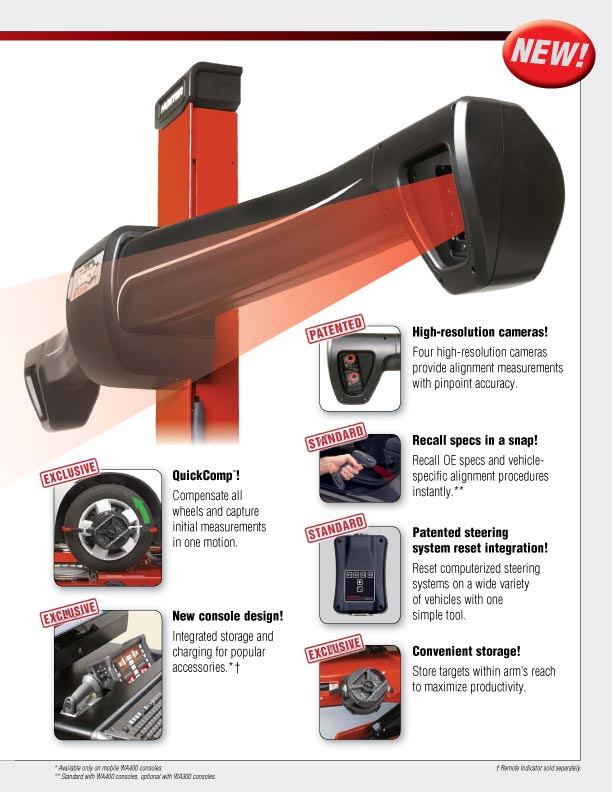
Why Wheel Alignment?
Reduced tire wear.
Improper alignment is a major cause of premature tire wear. Over the years, a properly aligned vehicle can add thousands of miles to tire life. Many tires are replaced prematurely due to adverse wear.
Better gas mileage
Gas mileage improves as rolling resistance is minimized. Total alignment sets all four wheels parallel, which along with proper inflation, minimizes rolling resistance.
Improved handling
Does your car pull to one side? Do you have to turn the steering wheel to keep your car traveling straight ahead? Many handling problems can be corrected by total alignment service.
Safer Driving
A suspension system inspection is part of the alignment procedure. This allows worn parts to be detected before they cause costly problems.
For vehicles with non-adjustable rear suspension:
- Alignment angle readings are measured at all wheels.
- The steering wheel is centered.
- Adjustable front wheel alignment angles are referenced to the rear thrust line and set to the vehicle manufacturer’s specification.
Result: all four wheel are parallel to one another and the steering wheel is centered.

For vehicles with adjustable rear suspension:
- Alignment angle readings are measured at all wheels.
- Adjustable rear alignment angles are set to the the manufacturer’s specification. (Rear thrust line corresponds to vehicle center line.)
- Steering wheel is centered.
- Adjustable front wheel alignment angles are references to the rear thrust line and set to the manufacturer’s specification.
Result: all four wheel are positioned straight ahead and parallel, and the steering wheel is centered.

How high-definition digital imaging wheel alignment works
Your shop uses four precision cameras to measure the position and orientation of targets mounted on each wheel of your car. The aligner uses this information to calculate your car’s current alignment measurements and then compares these measurements to the car manufacturer’s (O.E.M.) alignment specifications.
In your car’s wheel alignment is outside factory specifications, the aligner provides the technicion with the exact information needed to make the proper adjustments and return the alignment angles to the manufacturer’s specifications.

Q. How important is wheel alignment?
A. Think of it this way. Research indicates that the average car is driven about 12,000 miles per year. A car with toe alignment just 0.34 degrees (Just 0.17 inches) out of specification has dragged its tires sideways for more than 68 miles by the end of the year!
Q. What are the “symptoms” of a car that’s out of alignment?
A. Have your car checked if you notice:
- Excessive or uneven tire wear
- Steering wheel pulls to the left or right
- Feeling of looseness or wandering
- Steering wheel vibration or shimmy
- Steering wheel is not centered when car is moving straight ahead
Q. How often should I have my car aligned?
A. Follow the vehicle manufacturer’s recommendation noted in your owner’s manual. But, as a general rule, have your vehicle’s tires checked every 10,000 miles or at least once a year.